ETHICS: I have no business relationship with either Metabone or Conurus. They asked if I wanted to borrow a new lens adaptor for review that was “revolutionary”. Naturally I said YES PLEASE! I am receiving no financial remuneration for this blog post nor do I ever for any review, the exception being for any products that are my “Signature Products” or who are made by one of my affiliates for example Zacuto or Kessler. You can read more about my ethics here.
EDIT 17th January. I have just finished some tests that I have done with the Speedbooster adaptor, the FS700 and that MIGHTY chunk of glass from Canon…The L series 85mm F1.2. Please remember these are just mine and James’ unscientific tests below so any purchase decision based on these are naturally at your own risk. Please do not blame any tester if you find you don’t like it. It’s unlikely but a disclaimer I say about any review. So much is subjective and what one person likes does’t guarantee someone else does!
This truly is a beast of a lens. Heavy but beautiful. The images achievable from this are gorgeous. It’s also DAMN fast at F1.2. It’s lenses like this and the 50mm L series F1.2 that Metabones are using to say you can get that magical number of F0.9 on the FS100/700/ E-mount cameras with the adaptor (although the camera itself only reads this as F1.0, as it cannot go lower in its software)
If any lens was going to push this adaptor, it was this lens. James doesn’t have one, and I wasn’t able to test this lens with the speedboosterer until tonight (when I REALLY should be taking a break as I am between two workshops here in Dubai), when I got my hands on an FS700 here (mine is at home). So how does it fare?
It actually did bloody well…at everything except wide open, but that is not the fault of the adaptor…it’s the lens, as it does the same thing on a full frame camera when wide open (as you can see from the sample image on the 1DC below). Some people like the oval bokeh though! I don’t. I like my bokeh circular, and to get that circle at more closed off apertures you need a lot of blades!
The lens was never super brilliant at F1.2. There is always a cost to going so crazy wide open. When you pull focus wide open, that’s when it does look weird. Both on the Speedbooster and full frame, you see a sort of circular bowing…again this is a lens characteristic that goes when you drop down to F1.4, and it’s not an artifact created by the Speedbooster.
What is really interesting is how damn close the bokeh looks on the Speedbooster image compared to the full frame 1DC image…those circles are very similar size. Not quite as large maybe as the full frame…if not it’s damn close!
So, after pushing it to the extreme with bokeh, then comparing it to the same framing using the normal Metabones adaptor by moving back (therefore compressing the background so you see less, basically what a telephoto does) and then seeing how it compared… for me, it proves it’s an incredibly valuable piece of kit…I can now use my lovely 24-105 F4 on my FS700 and it has the range similar to how it is on my 1DX…it doesn’t lose that important wide end.
I have tested quite a few lenses now, so has James and so has Bryant Nero. I will test my 50mm F1.2 when I get back as it has been in for repair (third time in a year!!)
I have read comments that people think it is expensive at $600…I really do find this astonishing. Incredibly astonishing. Just think about it for a second…besides the fact that the normal adaptor costs $400, this is just $200 more and all your glass gains a stop and becomes wider. This is for $600…try buying faster glass instead, wider glass and see what the price difference is – then you will appreciate how good a value this is.
There’s also been some confusion about how an adaptor could possibly change a lens’s f-stop.
It’s confusing because Metabones has created a more-or-less new concept in the realm of DSLRs (the research is not new, but it’s new to mainstream users), and they need to describe it in normal photographer lingo. The adapter does increase the light hitting the sensor. Think of it like a magnifying glass, focusing light from a broader area (full-frame) onto a smaller area (M4/3). The problem is that the normal way to talk about an increase in light is to talk in f-stops. An f-stop is technically a measurement of the size of the aperture, and the aperture affects light input as well as other factors.
Now, the Speedbooster does not physically open the aperture any wider than it normally goes, but it does increase the light input. There’s confusion because photographers are normally used to thinking that “light input” and “f-stop” are two words for the same thing. They are directly related (they mutually affect each other), but they are not equivalent.
If you are familiar with cinematographer’s terminology, you might say that the Speedboster increases the t-stop , while the f-stop remains constant. t-stop is a pure measurement of light input, rather than aperture size. Hopefully that makes sense!!
Below are frame grabs from my tests. So to explain what these are, I have captions underneath each one. I shot with the FS700 in three different ways.
1: Speedbooster adaptor with 85mm
2: Standard Metabones adaptor and 85mm without physically moving showing the change in the frame size
3: Standard Metabones adaptor and 85mm attempting to match frame size by physically moving back from the object
For comparison I used the Canon 1DC I have on loan (which I rather adore…just wish it wasn’t so crazy expensive!) and shot in the following ways.
1: Full frame full HD with the 85mm
2: Super 35mm Full HD with the 85mm showing frame size change
3: 4k mode (a 1.3x crop)…why? Because it would be rude not to! 🙂
I have also done some frame grabs part way through focus pulls wide open and at F1.4 with both the normal and Speedbooster Metabones on, to show the issues caused by being wide open on the speedbooster.
For the match frames I have tried my best to match them up as close as I could…but I am tired..it’s late and forgive me if it’s a wee bit off at times! No attempt at colour correction was attempted and the ISOs between the FS700 and 1DC do not match exactly so don’t use the 1DC / FS700 grabs as a barometer for sensitivity….that was not part of this short test…I used the 1DC purely for the speedbooster test to see what a real full frame looks like.
Click on the image to see it native size.
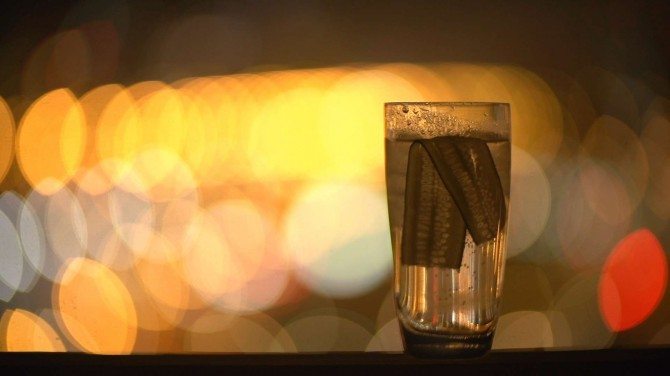
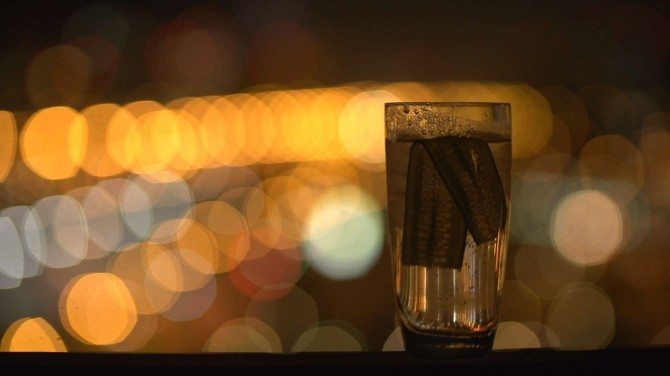
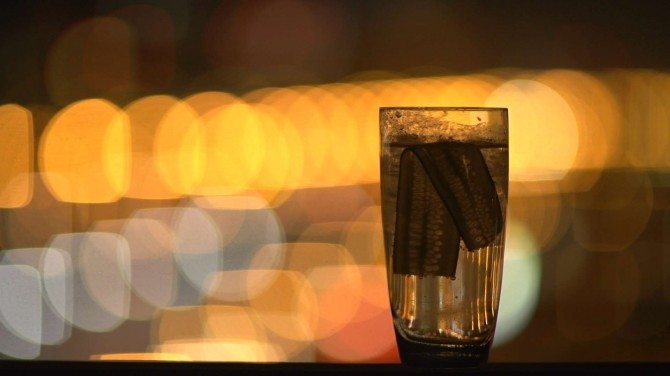
- FS700 Normal Metabones 85mm F1.4 MATCHED FRAME by moving backwards a feet
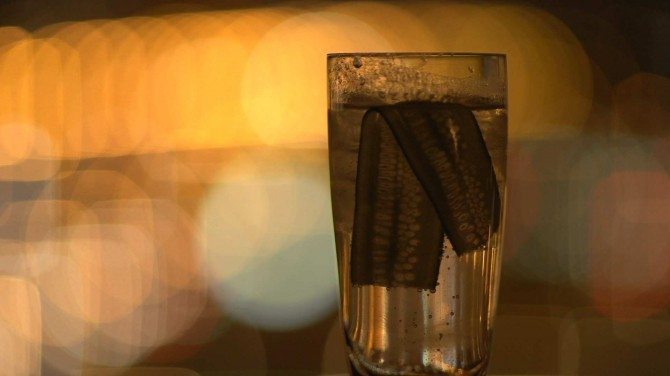

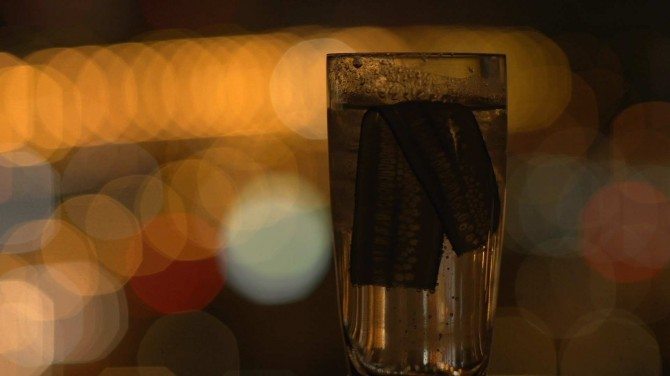





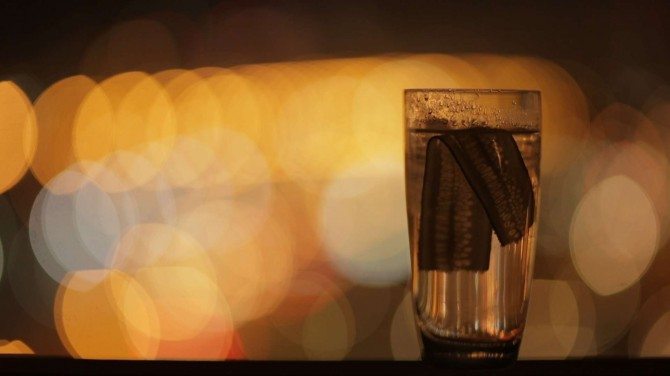
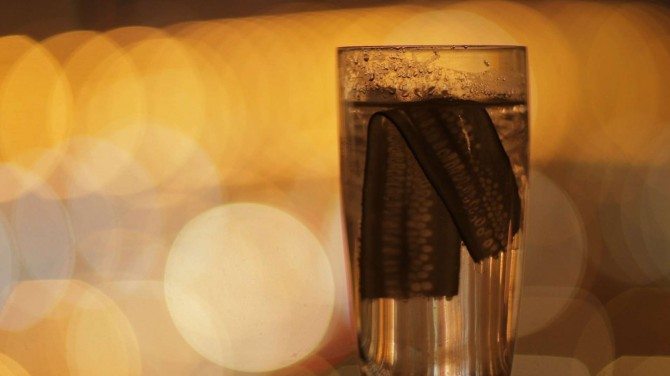
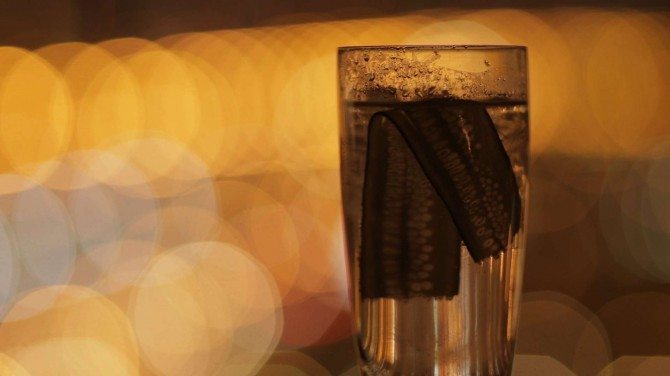

AND NOW BACK TO THE ORIGINAL POST
I have been using the Canon EF to E mount adaptor from Metabones / Conurus since they released them last year. They were revolutionary, as they were the first Canon to E-mount that interfaced with your camera. The iris was controlled via the camera, the adaptor was powered by the camera and IS also worked. It’s compact, cheap and works…not on every lens – the odd one did strange things, but version two is a big improvement.
At the beginning of the year, I was emailed by them asking if I wanted to borrow and test out a revolutionary new lens adaptor for EF to E mount. I said yes but to be honest, I couldn’t imagine what could be revolutionary about another one of their adaptors…ND maybe? I then received it. I was puzzled, as it looked the same but had glass at the lens side, not open like the current one. How could that be a good idea, and what does it do. Not long after that I found out via another email with an attached white paper. It was called the “Speed Booster”. What on earth is a speed booster?!? I skimmed through the rather technical white paper and realised that this was no a job not for me, but for my right hand man, founder of Mensa (probably not true), the UK’s McGyver and all round great fella, James Miller who is frequently to be found down on Brighton Beach lens whacking. He does love to whack. You can see loads of James’ Work on his vimeo page here.
James borrowed the adaptor for a few days and took the white paper to find out if what they claimed to be trued could be true. An adaptor that turns your current Canon/ Nikon lenses (no EF-S or DX) and makes them faster, wider and better optically. Wild, crazy claims and if true, clearly beamed to us from the distant future! Also, in reference to the blog title, a great one for an April’s Fool blog post. It’s just about 3 and a half months too early for that! So over to James to figure this out for all of us!
METABONES | Speed Booster by James Miller
What is the Metabones ‘Speed Booster’?
In a nutshell, it makes your lens faster, wider and sharper! Yes, really. Have a look at the film and tests below to judge your self.
It really is that good!
Shot and edited in a few hours from inside my car (it was raining). Tripod on the passenger seat. Filmed along Brighton sea front on the South coast of the UK and over the Sussex Downs. It’s a really quick test filmed on the Sony FS100 over-cranked in camera. The lens used was the Canon 17-40mm f/4 lens. Shot at 24mm to crop out the window frame. I really just wanted to test to see if the adapter was usable. I would have done more with other lenses if I had had more time. Hopefully I can do this soon. More shooting details on my Vimeo page. – https://vimeo.com/57284024
My thoughts so far.
Does it work? Well yes. After what has been some very speedy non scientific tests, I am very happy with the images produced so far. From what I have seen, will I be ordering one on release? Again yes, yes I will. The adapter I’ve tested is a prototype, so final judgment should be reserved until a production version is used and tested. I love that I can have a real 50mm on the FS100. I really hope that Black Magic Design work out a live (electronic) M4/3 mount on their BMCC so I can use ‘IS’ lenses. It’s not going to bring the image up to full frame, but it will really help on lens choice. Of course, I would actually have to be able to get a camera first. But in hopes of a live M4/3 lens mount, this really does do away with the need for the EF mount version of the BMCC.
How is this possible?
I have no idea, but I think it might go something like this…
In essence, it’s an optical adapter that attaches to the E mount of a Sony NEX camera (Super 35 sensor) and then to a full frame SLR lens. The Metabones ‘Speed Booster’ is a 0.71 x focal reducer, that will effectively turn your full frame 50mm f/1.8 lens into a 35mm f/1.2 lens. Note, doing so (as a guide) will increase the aperture of that lens by one stop. Your Sony NEX Super 35 E-Mount will effectively have near full frame coverage on a full-frame lens. It also serves ‘double-duty’ as a lens mount adapter, from Canon EF lens (but not EF-S) to Sony NEX, with auto-aperture and image stabilisation.
It’s not just for really fast lenses – for example, a Canon 17mm f/4 TSE now becomes a 12mm f/2.8 ultra-wide tilt shift. I myself am still building a lens collection, and whilst the super fast Canons due to cost are not in my personal arsenal, my slightly slower Canons and Nikons have just been given a speed boost. That’s great news.
Set up lit with 2 x 100w dedo lights set at 1 click on the box and a FilmGear LED Flo Light to the right of frame. Lights supplied from Jon at Shoot Blue. Sorry that it had to be booze in the shots, not much imagination! It was late, but I wanted that classic www.dpreview.com bottle of Baileys for resolution 🙂 What’s nice is the Bokeh remains the same – it just scales down in proportion to the image. That was one area I was worried about, but it’s great.
How does it increase the speed of the lens?
By the same way that a telephoto adapter decreases it. The ‘Speed Booster’ is placed behind the lens, so the entrance pupil of the lens (the aperture you can see when you look through the front of any lens) remains the same, but the focal length is reduced as it compresses the image, so the speed increases. (I think!) The amount of light that would have covered a full-frame sensor is now focused onto the smaller M4/3 sensor and is therefore more “concentrated”. There is a maximum input aperture of f/1.26 and a maximum output of f/0.90.
Why can’t the ‘Speed Booster’ be used on traditional DSLR’s like the Canon 5Dmk3?
Essentially the design is not possible, due to the flange distance (back of the lens to the sensor or image plane) and the reflex mirror. But with such an array of short flange distant mirror less cameras today, the opportunity is here to design an ‘inverse’ teleconverter. The benefits of the ‘Speed Booster’ come from taking advantage of full-frame lenses that are engineered to cover a much larger sensor than M4/3. This principle only applies when you have a lens that’s designed for a bigger sensor than the one you’re actually using.
This version is of the ‘Speed Booster’ is optimised for the NEX so it’s not just a case of putting it in a different housing. But the good news is that Metabones plans shortly after initial release, other camera mounts will follow, the Micro 4/3 and the Fuji X-mount and others in the future. That has some exciting possibilities! for the Micro 4/3 Black Magic Cinema Camera and the Panasonic GH3 and may also lead to the Canon EOS M series mount among others. Hopefully, Black Magic will at some point release the Micro 4/3 version of their Cinema Camera with live lens support.
What lenses can be used with the Metabones ‘Speed Booster’?
*All full frame 35mm SLR lenses. As they meet the coverage requirement of 40mm diagonal format covering 43.3mm. 
- Illustration show the relationship with Full Frame 35mm Lenses (FX) and lenses designed for crop sensors (DX)
Does the optical performance of the lens decrease when used with the ‘Speed Booster’?
It’s easy to assume it would, as you are all aware that teleconverters adapters basically will magnify the aberrations of the given lens.
The reverse is true for the MetaBones ‘Speed Booster’ as it compresses the image and reduces lens aberration for the given lens. Of course, the adapter is not completely aberration free, but still taking this into account, there is a significant improvement in MTF compared to the given lens used without the ‘Speed Booster’.
All other aberrations, including field curvature, coma, astigmatism, distortion, and chromatic aberration are also well-corrected.” Wow that is a big claim.
If you want to know a little information on what MTF (Modulation Transfer Function) is and how it’s measured here is a quick overview. – http://www.photozone.de/mtf
Will I still need my Metabones EF to E Mount adapter?
Yes, whilst it is fantastic to have the Metabones ‘Speed Booster’ focal reducer, you are also going to want your lens at the increased focal length you get on cropped sensor cameras. So by using a combination of Metabones adapters on my FS100, a 70-200 covers 70-200 at f/1.8 and up to 300mm at f/2.8.
Further advantages are lens size. It’s very hard if not impossible to find a lightweight, small, fast 35mm lens. But now by using the lovely cheap as chips 50mm f/1.8 Nikon E Series pancake lens, I can have a light weight small 35mm 1.2 that has increased MTF!! Brilliant.
I have the Nikon 50mm f/1.8 E Series lens. It’s a lovely light pancake and is well worth having in the bag. It’s the first lens I put on this adapter and for what it is, it’s great. They go on Ebay all the time. A good carry round lens with this adapter on a Sony 5n, 6 or 7.
Can you remember the cult lens used by NASA in the Apollo Moon-landing program? And the lens used by Stanley Kubrick in the film “Barry Lyndon”? It was the Zeiss 50mm f/0.70 this too used an integral focal reducer. Kubrick wanted to keep the scenes in Barry Lyndon as the eye sees them, natural without the need for additional fill lighting. He wanted candle lit scenes in English castles, lit by only the light of the candles themselves. To get wider shots, Kubrick also modified the lens further using an additional front mounted adapter from the Kollmorgen Corporation to produce a 36.5mm lens that remained at f/0.7.
Additional information from the White Paper:-
——-
Fastest Lenses Available: There are only a handful of production lenses that are f/1 or faster, and even the fastest are only f/0.95 (The Voigtlanders for M43 so it’s all relative) However, the Speed Booster can be combined with an f/1.2 SLR lens to yield a true f/0.90 combination with excellent performance.
Compact High Speed Lenses: 35mm f/1.2 lenses are available and can be used with mirrorless cameras via various mount adapters. However, these lenses are bulky and expensive. By contrast, the Speed Booster can be combined with a tiny inexpensive 50mm f/1.8 lens to produce a very compact and high performance 35mm f/1.2.
Ultra-Wide Lenses: As mentioned in Section 6 above, the Speed Booster can be combined with ultra-wide lenses such as the 8-16mm Sigma zoom lens to produce a record-breaking 5.6 – 11.2mm ultra-wide zoom for Micro Four Thirds.
Fast/Wide Tilt-Shift Lenses: Canon and Nikon have recently made major upgrades to their fullframe tilt shift lens offerings. The Speed Booster allows these phenomenal lenses to be used on mirrorless cameras without losing their field of view. For example, a Canon 17mm f/4 TSE now becomes a 12mm f/2.8 ultra-wide tilt shift for either the Sony NEX or Micro Four Thirds platforms. What’s more, the full range of adjustment in the tilt shift objective can be used even after the Speed Booster is attached.
This MTF behaviour turns out to be typical of most lenses when used with the Speed Booster, namely: 1) both the Sony NEX and Micro Four Thirds versions give a dramatic MTF enhancement near the centre of the image; 2) the Micro Four Thirds version is better than the original lens used by itself over nearly all of the Micro Four Thirds format; 3) in the outer parts of the field the Sony NEX version has slightly reduced contrast relative to the Micro Four Thirds version where their image circles overlap; and 4) the Sony NEX
8 version in the extreme corner of the NEX format has similar MTF to the original lens in its original image corner.
——–
Using the Metabones Speed Booster for stills?
Of course the Metabones Speed Booster is not just for video, it also does a great job in the stills area, and what better way to test resolution? I though this would be the weak point of the adapter but that does not seem to be the case.
Below is a very quick test using a Sony 5n E Mount camera. Shot at 70mm on the Canon 70-200 2.8 IS II lens. It looks like it does a really good job overall. I have not adjusted the expected exposure between the shots to match. I would have to do a few more tests to get an idea of corner sharpness. Also would be nice to test adjusting the physical distance of the camera to the subject to get the same framing.



And the most important question of all. Can I lens whack with this adapter?
Yes, yes you can. My favourite lens to ‘Whack’ with is a 50mm, and I really missed that on the Sony FS range. To get the same coverage I had to sometimes use a 35mm and fast 35mm lenses are heavy or very expensive. It’s best not to use the best glass when whacking just in case you drop it! I can now have that same look and feel I get with the Canon DSLRs.
Has this technology been used before?
Not in this unique setup – as it says, it’s taken the event of mirror less cameras with smaller sensors to make this happen. Barry Green over on dvxuser mentions that “the Olympus 14-35 & 35-100 f2.0 zooms are just 24-70 & 70-200 lenses redesigned with focal length reducers”.
But these are integrated into the lens and custom made for each zoom. Although this is just speculation, as this has not been confirmed by Olympus.
Here is a link to the article. http://www.dvxuser.com/V6/archive/index.php/t-236415.html
The ‘Speed Booster’ designed by Metabones® and Caldwell Photographic jointly . The White Paper will be available on Metabones’ web site following the press release. http://www.metabones.com
When will the ‘Speed Booster’ be available and how much will it cost?
It will be available in January 2013 from Metabones’ web site http://www.metabones.com and its worldwide dealer network for US$599 / £372 plus shipping and applicable taxes and duties. (EDIT PHILIP: I expect it to go sale tomorrow around noon Eastern US time)
HUGE thanks to James for this.
My additional thoughts…
When I first understood what this did, it made no sense to my tiny brain. James has made it a hell of a lot clearer and from his tests and using it he was really impressed. James is not an expert on optics, he is a shooter…he is just way more clued up on the technical stuff than me…after all he did notoriously remove an OLPF from his brand new 5Dmk3…Crazy man! BUT, let me say this. James is VERY HARD to please. He is always whinging about something he doesn’t like about a camera or something. So for him to say he wants one is a big deal. Should you go out and buy one because of this post? That’s up to you. I never recommend buying anything on one person’s say-so. I have it here with me in Dubai and will do some additional testing…I have my 85mm F1.2 with me, so that should be lovely lens to test it out with.
Is it too good to be true? Apparently not, according to James. I will add more thoughts throughout week the more I use it. If it really is as good as it seems, this really is going to be an absolutely essential piece of kit for anyone with an E-Mount camera and Micro Four thirds cameras. If the upcoming Blackmagic M43 will have electronics on it and won’t be passive, then this will be the essential for that camera and will actually make it way more appealing than the Canon EF version and will solve so many issues we have with the sensor size. It’s not actually quoted on the white paper, but theoretically this adaptor “could” get those lenses to behave more like they were on a S35 sensor than the 2.3x crop, which to be honest would be fantastic.
The reason that I say that I would want the BMD m43 to be electronic and not passive as it would then let us use Canon glass properly with this adaptor even though I mostly use Zeiss manual glass and without power it would work perfectly with manual glass. To have power would give us all that Canon glass with full control and most importantly IS…that rolling shutter needs IS for long lenses and handheld!
As it stands, just what it can do for S35 camera like the FS100 and FS700 is astounding. If only the Canon C300 and C100 didn’t have that stuck on camera mount…that’s the problem. It does wonders for Canon glass on other cameras…just not on Canon cameras! There is a fair bit of irony there! We now need one for the F3, F5 and F55!
I would love to see this in the hands of a true lens boffin to analyse for us. Hopefully this will happen soon. Then we can get some seriously tech analysis. For me and James we are more than happy. After all this is $600 not $6000!
My order for the production model will go in as soon as I can do it! I must say it’s rare for me to be utterly wowed by something but by jove I think I am. I need to test it more but so far my jaw is rather slack.
Oh and if you are in Dubai I do have the adaptor with me and will be doing a 1 day and a 2 day workshop this week, so do come if you can! Click the flier below for more info!





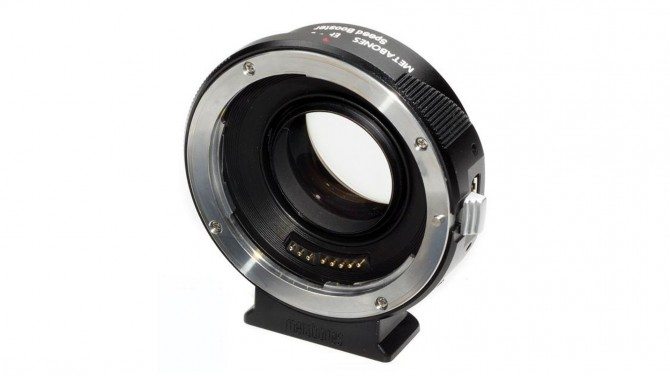
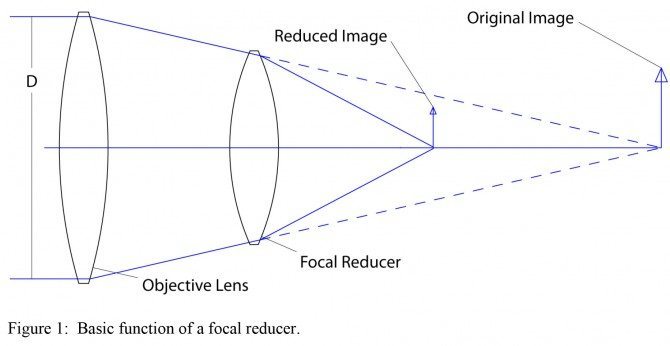
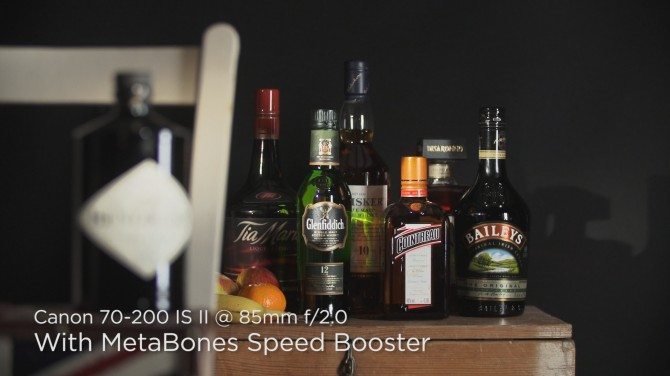
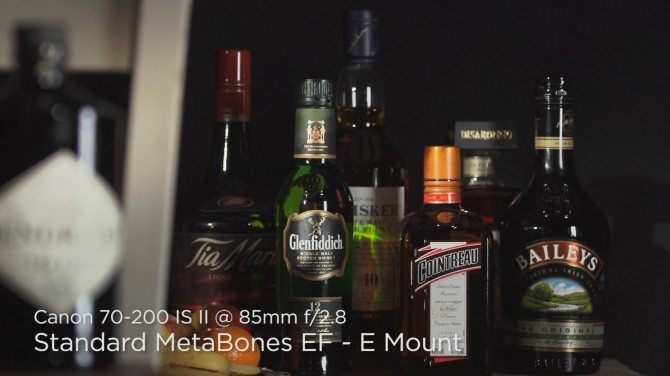


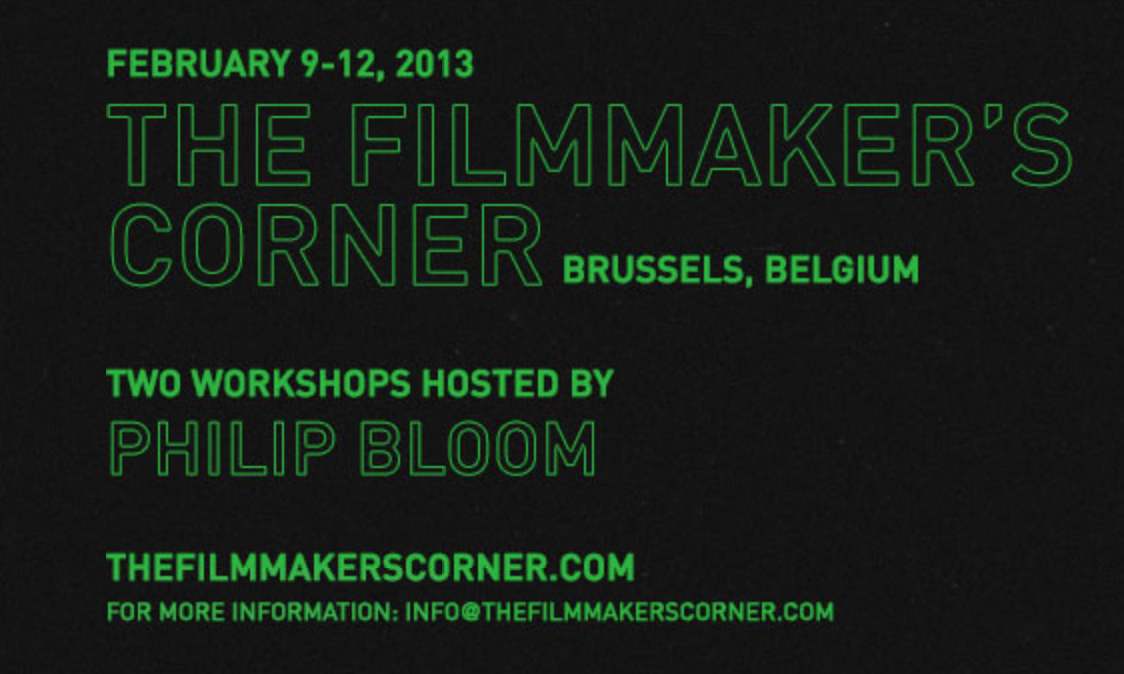


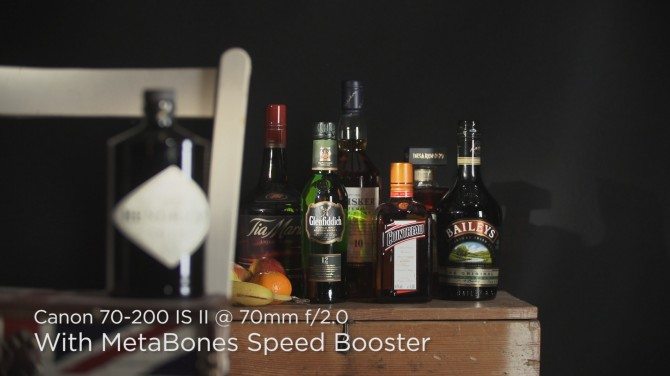
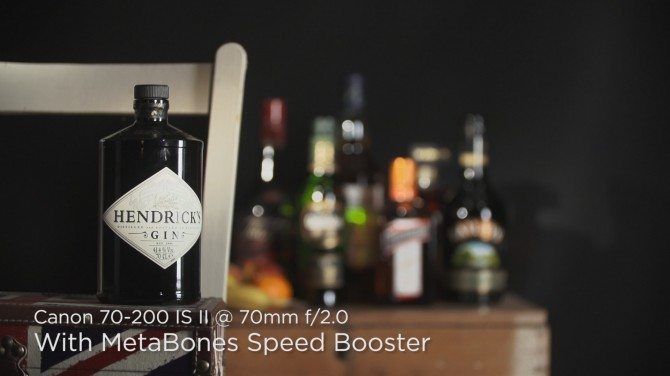
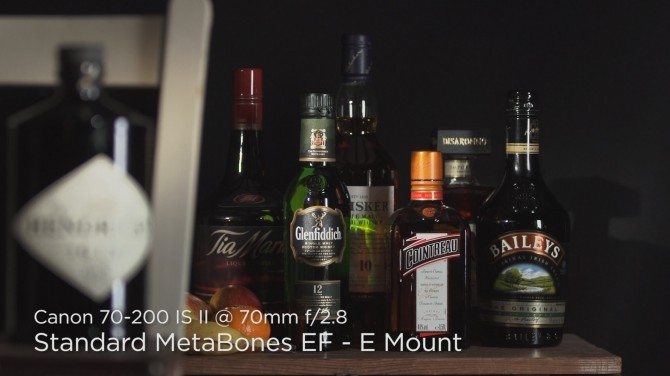
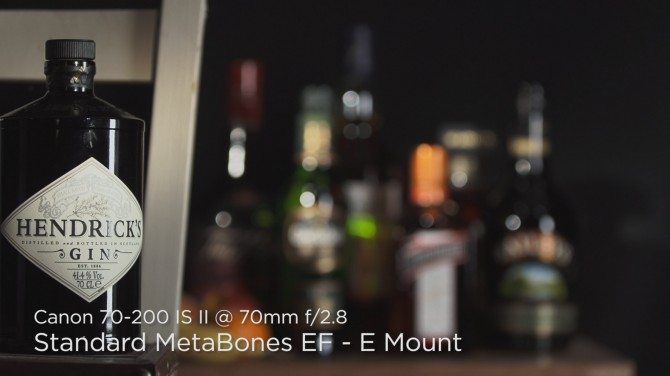
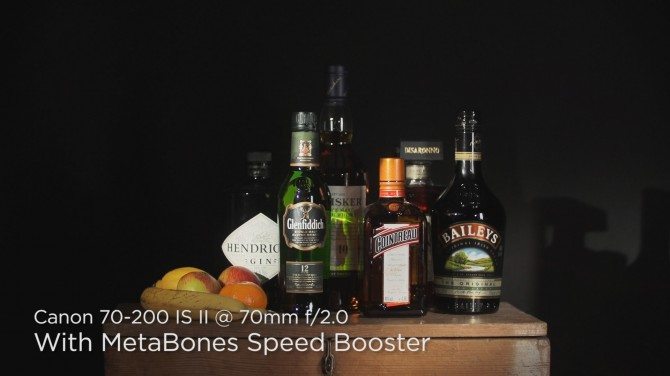
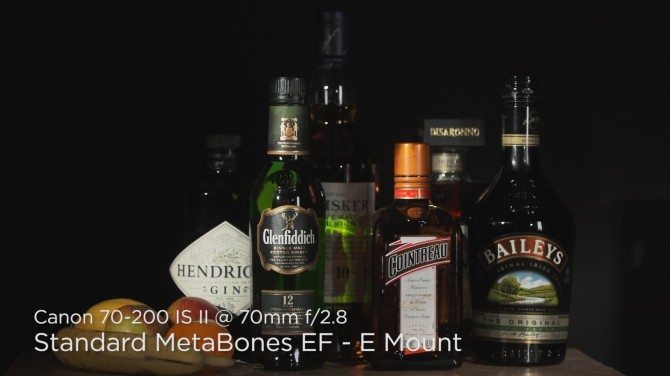

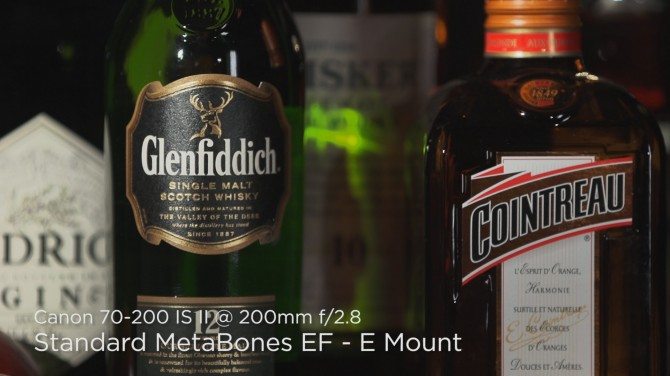
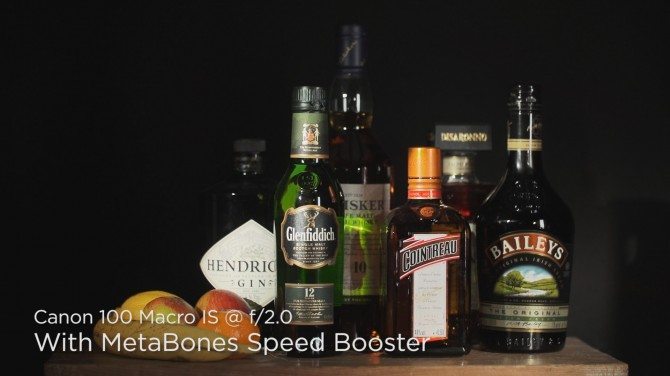
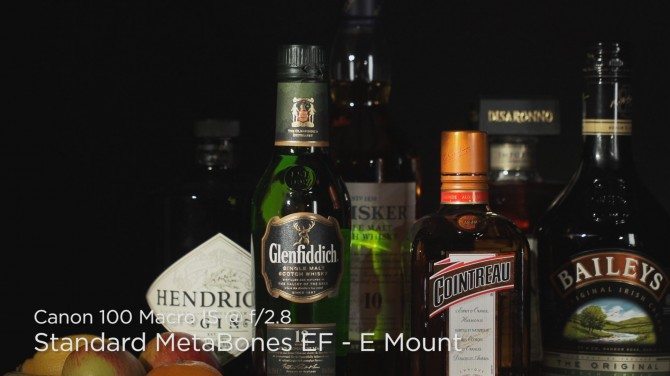
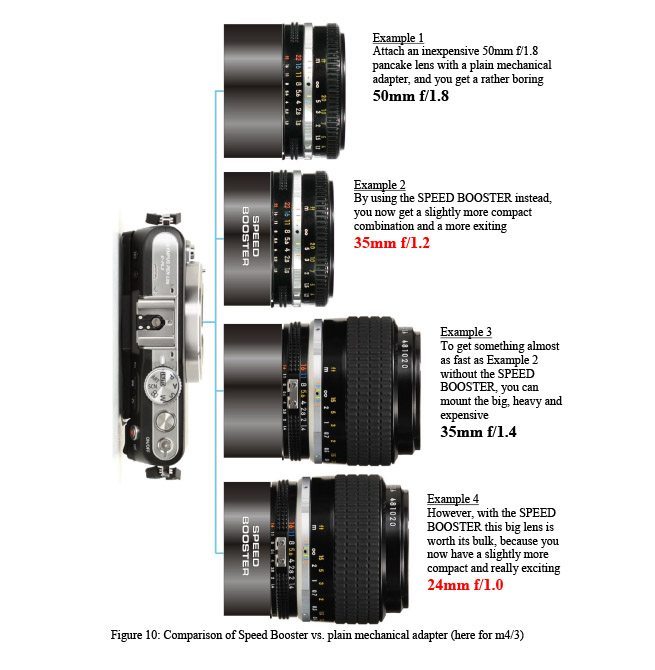
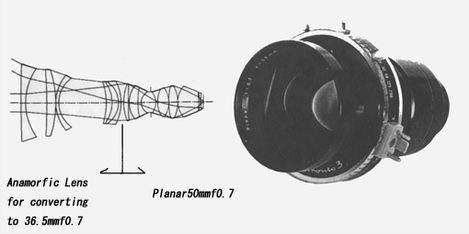

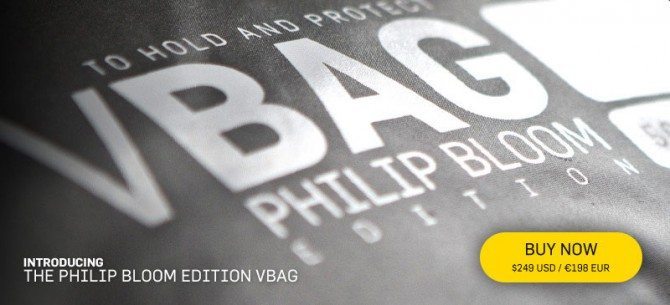
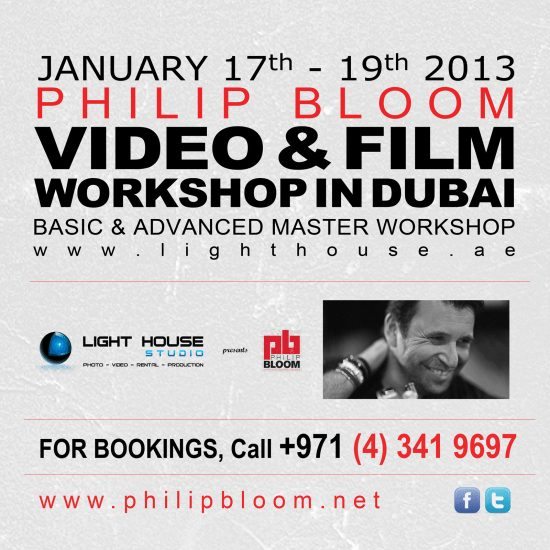
141 comments
Great post thanks. Just so I can get my head around this, this is designed for an APS-C crop yes? so for argument’s sake, it won’t work on a VG900? Also, if you lose a stop of light from using a crop sensor as opposed to full frame this will bring it back to it’s original effective F-stop? Don’t take this as pessimism, I’m just trying to get my head around the science. It seems like a really interesting product. Thanks, Julian
more or less…but everything is relative.
Cheers
You don’t lose a stop when using a lens designed for a full frame sensor (or film) on the smaller super 35 sensor. You lose some of the image. Now if you condens the image to the smaller sensor you get more light per square mm. At the same time the focal length is reduced. The aperture (F stop) is the area of the iris divided by the focal length. So if you keep the iris the same and reduce the focal lenth you gain lens aperture. Aperture is also called speed as it reflects the shutter time necessary to collect a certain amount of light.
effectively you do though
You don’t lose a stop when using a lens designed for a full frame sensor (or film) on the smaller super 35 sensor. You lose some of the image. Now if you condens the image to the smaller sensor you get more light per square mm. At the same time the focal length is reduced. The aperture (F stop) is the area of the iris divided by the focal length. So if you keep the iris the same and reduce the focal lenth you gain lens aperture. Aperture is also called speed as it reflects the shutter time necessary to collect a certain amount of light.
As the whole effect is based on reducing the size of the image this will only work with smaller sensors. It also won’t increase the bokeh (shorter focal length = less Bokeh, wider aperture = more Bokeh).
it seems to match the full frame bokeh on my above test shots.
OMG!! Is it too much ask a Leica M – Nex version?
This type of adapter will never work for Leica M type lenses
The adapter sits in the space that would be occupied by the mirror box on a DSLR, and pulls light rays in to ‘concentrate’ them in the smaller area of a mirrorless sensor.
Leica M lenses aren’t designed to be run that far from the sensor – there’s no room for the extra optics.
Leica R lenses may be a possibility.
We can always wish Mattia!
I would love an M version but alas I think Kunduchi is right..
Amazing results none the less.
Good stuff! Wondered why there hadn’t been any adaptors along the lines of this one popping up with the proliferation of apsc/mft chips.
Fingers crossed for that live mount bmcc. In the meantime GH2 and GH3 should be benefiting lots!
On a GH2 or GH3, can you change the fstop on the Canon lens?
Something to go wider and faster is a wonderful invention.
It is very ironic it won’t work on the Canon EOS cameras.
Interesting piece of kit… They need to get an F3/F5 version out fast !!!
So, this wouldn’t work for an EF mount Black Magic Cinema Camera? Say, I’m thinking of buying a BMCC. Would it be better to wait for a new 4/3rds and get this adapter or just go for the EF model and invest in some new lenses?
i think i answered this at the bottom of the post didnt i?
p
Yes and no. I probably should have stated my question more clearly, but I meant less in terms of performance
and more in terms of time. If Blackmagic are going to take a while coming out with a micro 4/3s then (being an
impatient person) I may just buy the EF version so I have something to shoot on.
Thanks for all the great work you do!
This is GodSent! Just what I needed for my next shooting on the FS100. I’ll order two just in case! 🙂
Now that is just a little bit special!
I’ve been using the standard metabones with my fs700 and nex7 but to get full frame fov back out of my L lenses would be amazing. To add an extra stop at the same time is just too good to be true!
Half expecting a gotcha post. 🙂
But this can be used without the existing EF-E monut adapter… or not? There is a slight contradiction regarding this in the story that’s why I raise this question.
i think it’s pretty clear. James said there is a time when you would want the original one too when you want the benefits of that longer lens.
I am referring to this quote:
“It also serves ‘double-duty’ as a lens mount adapter, from Canon EF lens (but not EF-S) to Sony NEX, with auto-aperture, image stabilisation”.
Aah… got it thanks. Great stuff as FS-100 owner.
It is indeed!
yep still makes sense to me. He says it works just like the normal metabones, just with the added speed boost. He then goes to say why he would like the original one too
p
Sounds awesome! Did Metabones mention a Micro 4/3 live adapter to EOS to you? They currently don’t have any EOS to M4/3 adapters, much less a live one. I can’t wait for this to happen if it truly does come to pass. I almost bought a Redrock Micro LiveLens adapter but it’s so clunky! I love my new GH3 and this would be the PERFECT companion since I already own a lot of Canon L glass.
Yes they are making a speed booster one and then I assume a normal one
brilliant! head is floating away, thinking about all the possibilities! imagine a super wide, super fast lens on micro 4/3 with still manageable DOF!
How does this effect depth of field, and what’s the multiplication factor for micro 4/3 and APS?
This could have huge ramification for the photography world.
Getting a Sony, Panasonic, and Olympus’s mirrorless cameras to perform like full-frame DSLRs with EF glass could result a lot more folks switching to mirrorless cameras. You already got cameras like the NEX 7, EM5, GH3, really closing the gap between themselves and full-frame cameras in IQ and features. This adapter could potentially close that gap completely. But the question is: should Sony, Panasonic, and Olympus be happy about this or not?
They would benefit from having a increase in camera body sales but on the other-hand this could kill any potential sales from their own lens lineups. They could still argue that with the size of EF lens being bigger will result in the camera being front heavy and that their lenses are optimized specifically for their sensors, but EF glass is very popular and a lot folks invested a whole lot of money into them.
If this adapter is found to perform as advertised, it will a interesting year in the war between DSLR vs. Mirrorless.
Ah man, and I thought I was the first to think of this 🙂
I never really thought it was possible to maintain correct focus calibration with witness marks if you stick the optics in there but hey, if they did it, kudos to Metabones!
Truthfully I knew sooner or later someone would pick up on the optical reducer thing to effectively bring the full frame look to a cropped sensor.
And as stated in the post, this will absolutely kill on m4/3.
I’ve seen experiments with industrial focal reducers and wasn’t really impressed. This looks impressive.
Rather giddily envisioning the thought of this with my Leicas… a “Noctilux 24,” joined by the “Summicron 19” and “Summilux 70,” etc.
If DX lenses work, suddenly m43 shooters have a few more affordable 12-35/2, 35-105/2, and 50-150/2 parfocal zooms…
Tokina “8-12/2”
Bigma “35-350/2.8-4.5… ”
Nuts. Absolutely nuts.
Wouldn’t it be possible to do the same on a C100/C300?
no Tommy. It’s explained in the post why by myself and James. How can you put a Canon lens adaptor on a Canon lens adaptor?
Canon needed to have made that camera without a fixed mount, like Sony did. Well Sony did put a fixed mount on but E mount is a great mount as the flange distance is tiny so any adaptor more or less can be put on it
I was thinking of one made like the 1.5x and 2x extenders, but with a glass that did the opposite of extending?
It’s aforementioned flange distance that makes this not possible.
The Canon EF mount of the CX00 line creates a large amount of distance between the back of the lens and the front of the sensor, in comparison to the E mount on the Sony FSX00 line whish is far less distanc.
The result is the adaptors like this are no compatible with the Canon range because it means the lens sits too far away from the sensor (when combining the size of the adaptor, and the large flange distance).
Hm. How about a version that extends INTO the “mirror box”? As long as there is nothing, and the thing can fit inside… Although the lens seems to be a bit closer to the sensor with that adapter than with a normal adapter…
IIRC Pentax had designed the K-01 with the regular K mount, so that you could mount any K mount Pentax lens designed for SLRs and DSLRs. However they were also able to create lenses that extend into the camera, so that the complete package won’t be bigger than say a NEX + lens. It’d be better balanced though.
If they can stick optics into the camera…
Also imagine a BMCC that comes with this adaptor. Either as an option, or fixed. Optional, with different versions for different adaptors for different mounts seems preferable… anyway, that way the “sensor is too small” criticism could be countered.
“Hm. How about a version that extends INTO the “mirror box”? As long as there is nothing…”
That’s the problem. The Canon Cx00 series have ND filters in there, so sticking anything into the camera would interfere with that and anything else Canon might think up to put into that space.
Pentax does not have that issue with the K-01 or anything else.
*Twists beard in reflection*
An elagant adapter, for a faster, fully framed and civilized age age.
WTFUKINAWESOME!!! What sorcery is this!?!?! THIS IS AMAZING! Imagine what this could do to all the wide, and low light, and dof, whiners of the BMCC! This just removed all of it! Now you can have wider, brighter lenses on smallers sensors…aka.mft/BMCC/s35! thats awesome!
But let me get it straight, why would you need the electronic mft version? Can you just use this with manual, FF covering lenses like zeis, Rokinon cine, CP.2 etc.
I cant get over wider, faster, sharper…thats like everything you want all your lenses to be. Now you can have them with a single adaptor! And real ass F0.9?!?! Have I said awesome yet?!
So so interesting.
I was about to make the jump to digital and FF, thought the 6d was the one but this may change everything. I have Con tax 35,50 and 85 and Oly 24mm and 40mm, if I went with a eos adaptor on all of these and then this new speed booster would they all work, ie leaving the booster permanently on the camera (either a fuji or a sony not sure yet) and then just swapping the lenses.
What do you think?
Leica on a shoestring so to speak.
Great post
S
Really Great News!
Will there be a way or a version of the adapter to use Canon Lenses on Canon’s C100/300 in the future?
That would be even greater! 🙂
Cheers, Patrick.
would love it too but physics can only do so much. If a camera has a Canon mount fixed on it you cant add another one!
Two comments about this. First, with this converter lenses on a APS/m43 sensor will now exhibit the same amount of vignetting as on a full frame sensor (e.g. more than with a standard adapter that crops the image). Second, consider two Sony cameras: one with a APS sensor (e.g. vg30) and one with a full frame sensor (vg900) – put the speed booster on the vg30 and a normal adapter on the vg900 each with the same 50mm f 1.4 lens. They will now have the same field of view (50mm full frame) and the same amount of light on the sensor, and the same depth of field (f 1.2 on cropped sensor, f 1.4 on the full frame sensor). In other words, you could think of the larger sensor of the full frame as effectively giving you a one stop aperture benefit in terms of light gathering. Hence, this adapter allows a full frame lens on a small sensor to mimic the same lens on a full frame sensor. Therefore, this adapter will remain a good idea as long as it costs less than the differential between a full frame and cropped sensor body.
Only philipbloom.net can cause me to spend $600 even before getting out of bed.
Thanks for this review/preview. This looks incredible and as an FS100 shooter will be a wonderful tool. I wish I had it for my shoot today!
Hey Philip, I sent you an email last week.
Anyway, you have one here in Dubai? I think I may have to find a way to attend the workshop and bring my FS700 and EF 16-35 to test it out. This is such good news. I want this adaptor now.
-Kirill
A slight aside but follow up to my email and dubai workshop: in the advanced course, are you able to go through motion controlled timelapses? I have a client who specifically requested this over the weekend, and timelapses is something i’ve never actually approached yet.
there will be some of this. not a huge amount. using the Oracle controller and kessler slider.
yep it’s with me now
What an amazingly idea! Somehow my brain is thinking that you’d need a different adapter for every lens to stop the image from skewing?
I really hope Metabones can pull a m43 version out the hat! I have all Canon L glass, but have been holding off from getting the 5Dmk3 due to some reviews for video and cost compared to the competition, I’d rather get a Panasonic GH3 with a compatible Metabones Speed Booster Adapter – that would be amazing!
Can’t help but wonder though if it will become reality or not though? Kipon stated last year that they were producing a m43 adapter for EF lenses, but then I heard they stopped work on it due to legal issues???
WHat do you mean reality? It is coming out…you can order it now!
Am I missing it then? I can’t see a Canon EF to MFT Speed Booster pre-order product on the Metabones site?
Also, looking at the adapter strength of 0.71 (as discussed in the whitepaper), I’m not sure if this is correct, but I presume my lenses on a MFT camera would change size as follows…
24mm (f1.4) + EF to MFT Speed Booster = 33.8mm
35mm (f1.4) + EF to MFT Speed Booster = 49.29mm
50mm (f1.2 + EF to MFT Speed Booster = 70.42mm
Not sure what the aperture would end up being though?
its not available yet as far as i can see. as soon as i will order one
They need to come out with this for PL and FZ mounts (for REDs and F5/F55) and they will be rich.
Although I just can’t imagine that there are no drawbacks for this. It has to increase some kind of abberation or distortion…
I imagine this would work pretty well with a Nikon lens to Canon EF mount adaptor if wanting to use Nikon mount or Zeiss cf.2 lenses with Nikon mounts installed.
Philip and James,
Big thank you! I’m sitting in the Oakland airport, catching up on stuff, and you both nailed it – I thought is was April fools. I didn’t need it explained twice to me; I ordered one the spot!
The reasons I bought the FS700 are becoming clearer and clearer. I own 30+ Canon lenses, just bought the Rokinon 35 and 85 cine lenses, and have 2 Metabones adapters. My 17 f4 TS is wicked already on the 700, but with this animal, all of my TS lenses are back in play as I know and love them.
Totally brilliant. Can’t wait to pretend I’m “Stanley Kubrick” with my 1.4’s and 1.2’s 😉
Michael Schoenfeld
My main question about this is how it actually alters the perceived depth of field. If for instance it turns your 50 1.8 into a 35 1.2, your image won’t have the same sized bokeh as a 35mm 1.2 on a fullframe camera?
Well, no. Closest approximation would be that it will act like a 35/1.2 on a cropped sensor camera in terms of FOV and DOF. Thus (factoring in the crop), you’d get approximate 50/1.8 FOV/DOF on APS-C, ~70/2.4 on m43, etc. F-stop should still be ~f1.2 in terms of exposure on any system.
If i was a Canon Full Frame user shooting video with a load of Canon EF lenses, the ~ $900 cost of picking up this adapter plus a cheap used 5N or newer 6 would be small potatoes. The ability to shoot 1080/50 or 60p at similar (though obviously not quite the same) focal lengths to FF and wider apertures would just be icing on the cake.
I can’t see much of a market for this for current NEX users who would balk at the cost of an adapter being more than the body, but this could be a big “in” to the Sony and E-Mount systems for pro’s and amateurs alike shooting with Canon EF lenses who’ve harbored some curiosity about Sony.
Hey, Philip. I’d like a bit of clarity if you can provide it. Are you saying that this will work for E-mount AND M43, or is Metabones coming out with a separate version just for M43? I’m not familiar with the differences between E-mount and M43, if any. Thanks.
yes it has to be different. two different adaptors.
Incredible !
But, if my english is not so bad, the EF=>M43 SpeedBooster doesn’t exist yet, right ?
it’s coming out
BTW, just read that the BMCC M43 is passive, not electronic. Bummer for the L-glass. Would that mean they would be stuck wide open?
yes the version announced is passive but there are rumblings or that changing…
Very cool. It’s taking the light from a full-frame image circle and concentrating it onto an area the size of a crop sensor. The concentrated image is brighter and retains a similar angle of view to the original image circle.
I’m assuming the upcoming m43 version will have a 0.5 factor size increase due to the smaller m43 sensor.
Am I assuming right? And if so, maybe following the “the more dense, the brighter” that could even bring to further luminosity increase? Well I’m dreaming I know, but seriously what about the scaling factor of the m43 version?
This is a great Idea but I would like to see it taken further. The adapter, as presented will only mount one type (brand) of lens.
I would like to see a mount (maybe manual only) that is smaller (thinner) and has adapters that can be attached so a range of lenses can be attached, a bit like the old Adaptall. That way I could purchase the reducer in m43 mount. Then fit M mount, or pentax or whatever adapters. Enabling the use of any manual lens. Or simply put the reducer lens in the range of adapters they currently make and forget electronic conversions.
Hi Jim
That sounds interesting, not sure how plausible or even realistic it is.
What it does is amazing yet you want it do more? Perhaps because you don’t have Canon lenses maybe? It really is terrific that this has come out and saying yeah but wouldn’t it be better if it did XYZ? Sure but wouldn’t everything?
I honestly don’t see how what you suggest can even be made. The lens part of the adaptor would surely make that close to impossible?
Appreciate your interesting thoughts though.
Best
p
They appear to be making several variants, so far noticing E-EF, E-Nikon F, E-Leica R, etc… some of which are “dumb” adapters without electrical connection and accordingly lower cost.
Even though I don’t own any Canon lenses, I’d likely buy the Canon EF mount version (which would have the greatest flange distance) and then adapt the adapter via various “dumb” adapters I already own to Nikon, Leica R, OM, M42, etc.
Now, if DX lenses don’t vignette on m43 and they make a functional electronic adapter betwixt the two, then that would be a sensible extra purchase as I own a few Nikon AF lenses.
How does it increase the speed of the lens? It’s a basic optical imaging law known as the “Lagrange Invariant” or simply the optical invariant. Reducing the resultant image size will increase the overall brightness by the same factor (minus a tiny loss due to diffraction.) However, the depth of field will remain the same as the actual focal length and aperture used on the taking lens (as shown in the test shots above.)
This is good news for those of us who shoot high-speed with our FS700 cameras. An extra stop comes in very handy when shooting at 240fps!
However, I wouldn’t necessarily classify this adapter as revolutionary. It is an old concept that has been done a few times, first by Angeneuix/Zeiss and most recently in JVC’s HZ-CA13U 16mm to 1/3″ adapter. Some technical info and test results are in this review I wrote a few years ago. http://www.dashwood3d.com/downloads/HZ-CA13U.pdf
If there is anything revolutionary about the Metabones adapter, it is the considerably low price and the fact that it does not invert the image. I’m looking forward to testing out the Nikon version on my FS700 when it is released.
Hey Tim
IO am sure you know this but for others it’s “effectively” increasing the speed of the lens, like it is “effectively” reducing the focal length. As in the lens is still a 50mm F1.2. That won’t actually change it’s how it actually performs that changes.
I remember that old JVC one. That was a big old reduction needed on that one! But I still think this is revolutionary as although the tech has been out there for a long time it’s never been harnessed for the mass market and brought out for so little. That is what is revolutionary.
P
I feel a bit thick here, and lost in the the comment thread… this is an adapter for E Mount cameras such as the FS 100. It’s implied in the comments that the adapter can be used with micro 4/3 cameras such as the GH2 / GH3 cameras. If so, how does that work? Thanks for the post Philip!
who implied that mookie? no two separate adaptors. Has to be.
“DALECAMPBELLFILMS2 DAYS AGO
Good stuff! Wondered why there hadn’t been any adaptors along the lines of this one popping up with the proliferation of apsc/mft chips.
Fingers crossed for that live mount bmcc. In the meantime GH2 and GH3 should be benefiting lots!
Reply
JIM2 DAYS AGO
On a GH2 or GH3, can you change the fstop on the Canon lens?
Something to go wider and faster is a wonderful invention.”
I took from these comments the implication that there would be a way to make this adapter work with an MFT camera, which would be fantastic. Is that possible? What I have been looking for, for some time is an adapter to apply my Canon lenses to a GH2 / GH3.
Hi Mookie
Its mentioned a couple of times at least in the post that they are making a version for m43
P
Thanks Philip, and sorry! New reading glasses. 😀
hi
the purpose of this adapter seems to only be to reduce the distance of light focusing on a smaller sensor.
if this expensive adapter missed the inside lens and only extend the distance between the FX lens and the small sensor (micro four third) you would get the same result (but at a longer distance) and save this extra lens in the adater – is it not ?
you don’t mean move the lens further away from the sensor do you?
BTW $600 is hardly what I would class an expansive adaptor to be honest. But I guess things are all relative!
i was asking if there would be any difference in this figure : http://i.imgur.com/45iXy.png?1 between putting the sensor in position 1 (using the focal reducer lens in the adapter) and putting it in position 2 (without using the focal reducer lens)
i refer you to my latest reply…
P
if my previous hypothesis is correct, it would also mean you can get the same “speed boosting” effect without theis expensive adapter just using the ETC crop mode on on a gh2 or GH3 if you moved your lens a few milimiters away from your sensor (in this setup the etc crop mode would no longer give you a zoom effect but it would concentrate the light (“speed boost” effect) in the cropped part in the center of the sensor)
Hi there!
First off stop calling it an expensive adaptor. The normal one costs $400 and is a damn bargain to give FULL EF control on E mount camera. I know things are relative but please. Do you understand why this adaptor gives you for this cost?!
Secondly. Eh? That makes absolutely no sense. You do understand the concept of flange to lens distance do you? If not then i truly recommend you look it up.
Best
p
thanks philip, got it, i will open a book on optics.
@Amanieux Why didn’t i think of that, this is brilliant!
Can’t stop laughing your post really made my day 😉
Thanks for the post! I’m sure many will find good use to this new tool! Don’t forget to bring your shorts next month, it is HOT here in Miami 😉
Do we keep the AF with this ? (for a XPRO1)
Wouldn’t you be able to make one that mounts medium format lenses onto Full frame cameras?
any camera with a mirror is out of the question…
Oh okay. So what we need is the mystical full frame mirrorless Sony might be working on, I guess. Then, if any company would make such an adapter – you could in theory get medium format DOF on a full frame?
And THEN… mirrorless medium format with 4×5 lenses….
Hey Philip, first thanks for the brilliant review, ordered one instantly (EF to FS700)
I’am using a chinese adapter to use Mamiya 645 Lenses on a Canon 5DII and since the image circle is still wider this the Speed Booster should work in that case, shouldn’t it? If they would build one in those dimensions that is…
Sebastian
to be honest seb i cant say for sure. only one way to find out!
I don’t see why not. The important thins is that there’s a good chunk of difference in the flange focal length to allow the placement of the reducer without undue stress. If it works between EF (FFL=44mm) and E-mount (FFL=18 mm) whereby the delta is 26mm, I can’t see why it wouldn’t work between, say, Hasselblad (75 mm) and EF mount, whereby the delta is a whopping 31 mm.
So am I right in saying, if they developed a version for it, you could have and EF-EF or EF-EFS mount to use EF lenses on Canon cameras with an APS-C chips, like the 7D, 60D, etc.
Obviously you can use EF lenses on APS-C bodies already, but you’d get the benefit of the speed bost, and the wider angle.
Correct me if I’m wrong…
if there is a mirror and a fixed canon mount then no…the blackmagic has no mirror but has a fixed mount so not mossible. You need to have this adaptor RIGHT up against the sensor
P
Right, got it. Thanks Philip.
I am wondering whether a MFT version of the Metabones Speed Booster – once it is released – would work with the Lumix 12-35 mm f2.8 lens? If it would work, what would be the change to the performance?
What about inner reflections, Phil? Have you noticed something? Thank you!
I would love to see this in the hands of a true lens boffin to analyse for us.
Philip, why don`t you ask for the opinion mr. Jonathan Maxwell of Cooke Optics. Recently I`ve read on FDT site his explanation of Cooke lenses exceptional and unique look. Something about balancing chromatic aberrations and the stuff. It was an eyeopener for me, his words was an art of visual perception and optical science rolled in one, althrough mr. Maxwell maintains that he`s purely an optical scientist.
I have a bunch of PENTAX 6×7 glass from the Previous period. There is a Pentax 6×7 to Canon lens adapter out there. Any thoughts on slapping it on to the Speedbooster? There’s a lot of glass and coverage on those sharp old lenses.
The fundamental idea seems good. I believe the execution is wrong.
I will not pay $6-700 for a Canon to Nex adapter. I will not pay ann additional $6-700 for a nikon to Nex adapter. I will not pay a further $6-700 for a Sony to Nex adapter and the same for any other adapters they dream up. Then repeat the whole thing for M43.
I think the vast majority of third party lens users will be with me on that.
I would be interested in a plain MF adapter with a focal reducer. Preferably with an interchangeable front end for different brand lenses.
This is only of use to those that have retained old AF glass after changing systems, or have multiple systems available. If that is the case then use the old system.
To use for a MF 135 lens on a m43 it is far to expensive, besides which, most users of M43 and Nex with 135 lenses use several different brands not one.
I believe it would be hard if not impossible for a company to make an adaptor to suit all purposes. If they are going to produce “dumb” adaptors for older manual glass too or if others like Novoflex would think about that – given there is no problem patent-wise – this could change again. I find it quite amazing still for a first step.
I’d prefer just one EF-m43 dumb adapter, then subadapt from that. Dumb adapters for E and m43 are/will be available as well at ~$200 less than the full-zoot adapters.
That said, I’ll happily buy a fully functional EF or DX speedboost adapter. Theoretically, this $600 adapter plus my $500-used Sigma 50-150/2.8 yields a 35-105/2… 2/3 the cost of existing Panasonic and Olympus zooms in that range, and has repeatable focus to boot. It pays for itself right there.
It could turn a $300 Tamron 17-50/2.8 into a ~$900 12-35/2
It could turn my $500 Leica Summicron-R 50 into the equivalent of a $3000 Summilux-R 35… my $100 Olympus 50/1.4 into a non-existent 35/1… it makes lenses that don’t exist out of inexpensive lenses that do, like some optical Rumplestiltskin.
Yes, it will cost a lot, but judging from my lens collection, it will save far more than its value… assuming it works as advertised.
“optical Rumplestiltskin” – you made my morning. Hope it won’t implode when getting upset.
Have some fast Voigtlaenders with M-mount and I wonder what that thing would do to the Nokton 50mm f 1.1. Make it light emitting?… 😉
Anyhow – good news for smaller sensor mirrorless.
yeah i was too grumpy..corrected it!
This will be such a game changer in so many ways.
Why this is such amazing value for money is not just because you can get a full frame look on a crop sensor but that with a standard adapter as well suddenly you get 2 different ranges of the lenses you have. Since lenses are your main investment this could spell huge savings not to mention less lenses to carry around. We always had doublers before but you were always in the knowledge that they made your lens slower and degraded the image.
One exiting thought about this adapter is something that maybe possible in the near future. There is always the trade off between sensor resolution and sensitivity. If for example you had a future full frame camera with an e-mount (or even a crop sensor) where with an adapter you could focus and increase the light on the centre 2k or 4k of the sensor just for video. We could then have high resolution for photographs without the adapter and with it brilliant low light with reduced or no Moire and aliasing video and still have the focal length and DOF as with using the whole sensor.
Denham
🙂 it took me months to save up for my very first DSLR 650D and the reason for getting this cam is my passion to learn and to master the craft of Video Making though many says that I am too old for that though $600 for an adapter sounds a bit too much at least for a guy like me but I am sure it would be something awesome if PB is praising it.
it really is cheap considering if you look how much fast glass costs!
I apologize about not having sufficient knowledge about the Lens Adapter and their prices 🙂
I think you do make intelligent sense about getting this adapter having more creative access while using the glass. I will get it when things are right for me.
Thanks for the reply, you are one of my icons and role model. Please keep up your amazing work.
cheers. good luck with all. it’s such an amazing little thing that when you add up what it could save you in money is astonishing. let alone what it does that money cant buy!
Yeah, it’s actually a big money SAVER considering every lens becomes 2 if you get both adapters.
Just saying, I ADORE the curved, pointy bokeh because it shows just how wide open the lens is as well it’s “mysticalness”, but each to their own!
When you say an 8-16mm lens is turned into a record-breaking 5.6-11.2mm lens, that’s actually not true in some sense because the original 8-16mm was never being used to it’s 35mm “full potential” but actually showed something like 16-32mm (because of the 2x crop factor of micro 4/3″).. so the 5.6-11.2 turns into a 11.2-22.4mm lens, which of course is still really wide, but not as record breaking as you might think, is that right?
And also calling something a 35 1.2 (from a 50 1.8) is still a 70mm field of view in full frame but with the added stop of light, so it’s not really quite as wide as you might think, yea?
Peace up 🙂
Is it right that the MFT version has the same 0,7 multiplicator ?
i think a 0,5 multiplicator (when its possible) would be epic win ^^ for GH2/3 and BMC
no idea…sorry! it’s not been announced!
Interesting stuff. I await the E-mount to Nikon version.
you could just put a canon to nikon adaptor on it!
Two adaptors, one over the other? Never tried that before, but sounds like it might be risky. Does anyone have any experience?
Sounds like a good idea actually! Someone on DVXuser suggested the same thing. I think he does it with the ‘regular’ Metabones ef-nex adaptor plus a Nikon-EF adaptor. He said it worked fine. No movement.
A lot of folks have trouble believing that an adaptor could increase the speed of a lens. It is a rather difficult concept to wrap one’s head around. To that end, it would be extremely helpful if you would add the ISO and shutter speed info for each of your test photos. Tis would illustrate rather clearly the effect the adapter has on exposure.
Thanks!
i don’t need to…nothing changed between them.
think about how light is lost when a big chunk of the light from a lens designed for full frame hits a smaller sensor. it’s lost. this concentrate its so it all hits it. Hence the light increase.
I don’t understand. Are you saying that all the shots were taken at the same ISO and shutter speed?
same iso and shutter speed on each individual camera. not same on both…tested bokeh…not sensitivity.
Hey Jeremy, check out the new paragraph at the very end of the post. Does that help clear it up?
Hello
Just a quickie, if I was to put a basic eos adapter on some contax and olympus lenses, would just one speedbooster work.
Rather than have a dedicated speedbooster to each brand of lens. Making the various lenses a generic fit ie Canon eos, is this too much of a compromise?.
I was thinking of buying into the Fuji X camera.
Cheers
Great review and info, thanks for the hard work. Good to know there’s some smarty pants innovators out there who can surprise us with a wee gem like this. I love the original smart adaptor for my FS700. Looking forward to the next Metabones adaptor surprise… Base metal to gold version maybe? Built in ‘Back to the Future’ hover-dolly? Laser weapon that vaporises people who ask ‘You need any extras?’
Thanks for the review. Seems like a great piece of gear and priced accordingly.
Some people can’t see what they are getting and I agree to a certain extent that a lot of production items are overpriced, but this one here, for what you get is pretty spectacular.
You kill that Hendricks yet? 🙂
I’ve already posted, but have to say that I’m really burning out on the hope for an active Canon adapter for MFT cameras. Why is it taking so long for a company to develop this, when clearly there is a good value proposition? Is it that tricky a development feat?
its coming!
Anyone know if this would work with a Sony NEX-EA50? I assume so, as it is an NEX camera and APS-C. Think it would overcome the slowness of the stock lens it comes with?
dont see why not!!
Thanks man. Exciting to see “breaking news” mixed in with tests.
I tried doing the math myself, but my brain isn’t working. Perhaps someone else can run the numbers…
In theory, couldn’t an ef-s lens be used on the m4/3 version of the adapter on a black magic camera? I know it wouldn’t work on on the E mount or a normal 4/3 camera because you’d see the edges of the lens… but i wonder if the remaining crop factor on the BMCC would crop in enough to allow ef-s lenses to fill the sensor without showing vignetting.
Does that make sense to anyone else?
… although the adapter will probably physically blocks the use of ef-s lenses since most m4/3 cameras wont have that severe of a crop. hmm.
Dont ask me! Ask James!!
I am not a news site, many of those who do it brilliantly…I try to do something different!
Hi Phil will the adapter slow down the speed of AF say on a nex-6?
Thanks mate!
well its canon autofocus, the same speed as the normal metabones…
This is an amazing piece of kit, and great value!
Just one question I haven’t been able to puzzle out – I understand that the adapter is able to restore near to the original FOV and give a 1-stop aperture advantage, but what happens to DOF/OOF rendering? I’m assuming you get the original DOF/OOF of the original lens (as a crop sensor never changes this, just gives a crop of the centre of frame), but can someone please confirm this, my brain is slow today 😉
Cheers again for a great review guys, your hard work is appreciated!
This seriously makes me so mad…. I bought the standard metabones adapter about 3 weeks before this one came out.
I’m jk obviously, just shooting with the FS700 on canon glass but haven’t yet built up my lens kit as much as I’d like and that extra stop would have been nice.
Power to metabones either way for making a great quality product. I’m very happy with it, and I received good customer support from them as well.
Thank you for your wonderful blog, i love it!
Always very interesting information such as this review.
Thank you for a great review – and also your other review on the FS700. I have just put in an order for a FS700, and would ordinarily love to get the Speedbooster adapter. But I am coming as a 7D and 60D user, and as such I have the following lenses:
Canon 17-55 2.8 EF-S
Canon 10-22 EF-S
Sigma 30 1.4 EX DC (EF-S mount)
Canon 28-200 2.8 IS (version 1)
Canon 50 1.4
Canon 2 x adapter
So you can see that 3 of the lenses use the EF-S mount. So in order for ALL my lenses to work I will have to get the ordinary Metabones EF to NEX adapter.
It’s a shame the Speedbooster version couldn’t be ‘switched’ into EF-S mode, and then I’d buy it. Otherwise it would seem an expensive luxury for me at this stage just so I can use it with 2 of my current lenses. One for the future maybe!
I borrowed and tested a FS700 last weekend using purely with my lenses – just so I could be satisfied that all my lenses work with it. Good news is they all do. The 10-22 is especially great as it give me the same very wide FOV as on my 7D – to my eyes anyway!
Edit: I meant the Canon 70-200 L 2.8 IS (version 1) – NOT a 28-200 as it doesn’t exist!
yeah problem is the glass…its in there…i know you do need both…i have both, essential! 🙂
Just to say that I have, in the end, taken your’s and other’s advice and bought the Speedbooster alongside the Canon 24-105 L lens (giving F2.8 and a wider FOV with the Speedbooster). So I now have both Metabones adapters, and I’m very happy with the versatility and results this gives me, glad I splashed out. Cheers!